Rumbles On The Colorado-Utah Border Spark New Water Plan
5:30 minutes
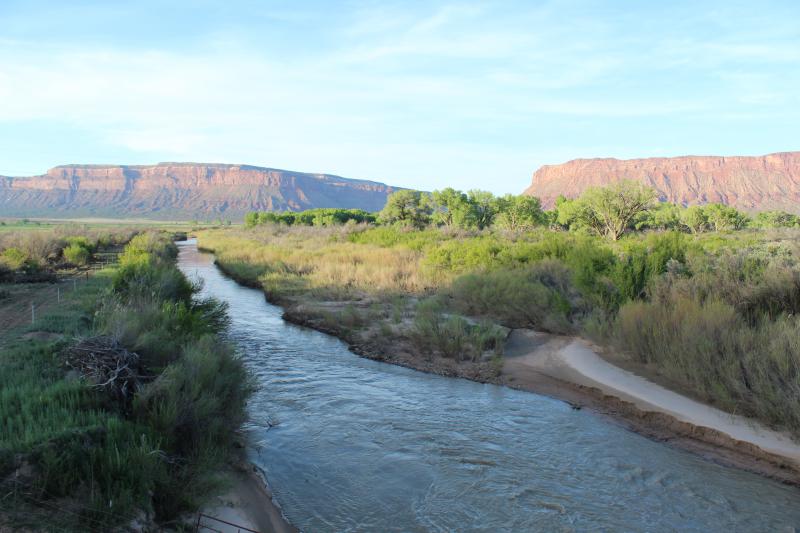
 This segment is part of The State of Science, a series featuring science stories from public radio stations across the United States. Original reporting on this story by Luke Runyon appeared on KUNC.
This segment is part of The State of Science, a series featuring science stories from public radio stations across the United States. Original reporting on this story by Luke Runyon appeared on KUNC.
Nara Bopp was working at a thrift store in Moab, Utah the morning of March 4 when her desk started moving.
“I immediately assumed that it was a garbage truck,” Bopp said.
She looked out the window. No garbage truck. No construction nearby either. So she did the same thing she does every time something weird happens in Moab: She logged onto the town’s unofficial Facebook page to see what was up.
“Pretty much everyone was saying: ‘Did you just feel that earthquake?’ or, ‘Did you just feel something shaking? Was that an earthquake? Does Moab even get earthquakes? This is crazy,’” Bopp said.
Moab doesn’t normally have earthquakes people can feel. This one—at a magnitude 4.5—didn’t cause any damage. But it was enough to get people’s attention in communities all along the Utah-Colorado border. Many took to social media to post about the uncharacteristic shaking.
Earthquake felt like it came in two waves. First I heard a loud bang and a crack with a little movement, then felt a second wave that made my building shake. Felt like standing on a boat in water. #Moab #Earthquake
— J-Grizzle (@JoshUtahPosse) March 4, 2019
Whoa! We just felt an earthquake shake Moab for a few seconds.
— Ashley Bunton (@ashbunton) March 4, 2019
We felt this in Grand Junction, barely. Thought it was workers on the roof moving equipment. #earthquake #mesacounty https://t.co/kTBGq0HB7G
— Scott Braden (@greenriverscott) March 4, 2019
Earthquakes can feel like a freak of nature, something that strikes at random. But not this one. There’s no question where it came from and that human activity caused it.
Since the turn of the 20th century, the Colorado River and its tributaries have been dammed and diverted to sustain the growth of massive cities and large-scale farming in the American Southwest. Attempts to bend the river system to humanity’s will have also led to all kinds of unintended consequences. In Colorado’s Paradox Valley, those unintended consequences take the form of earthquakes.
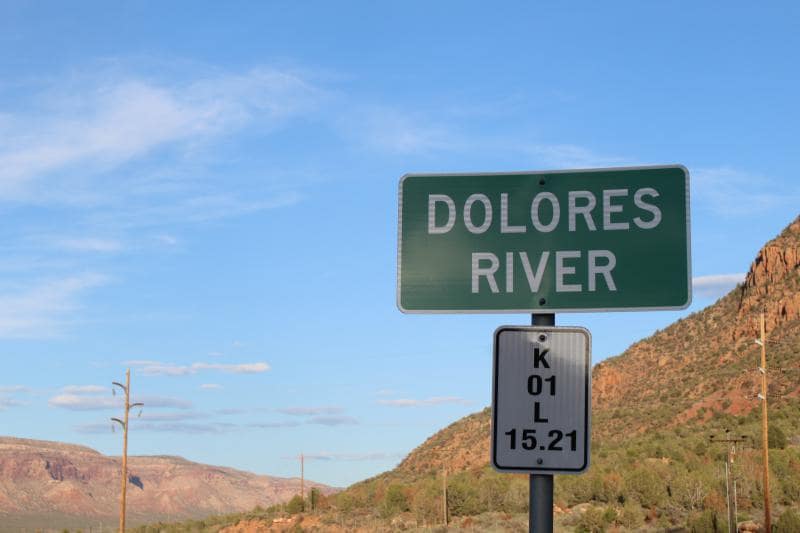
The earthquake that shook desks in Moab had its epicenter near a little-known federal wastewater facility near Bedrock, Colorado.
“Welcome to Paradox,” said Andy Nicholas, at the headquarters for the U.S. Bureau of Reclamation’s Paradox Valley Unit. The office is situated near the banks of the Dolores River, an important Colorado River tributary. The waterway cuts across the valley perpendicularly, rather than flowing down it. An early explorer noted the valley’s uncanny, paradoxical topography and the name stuck.
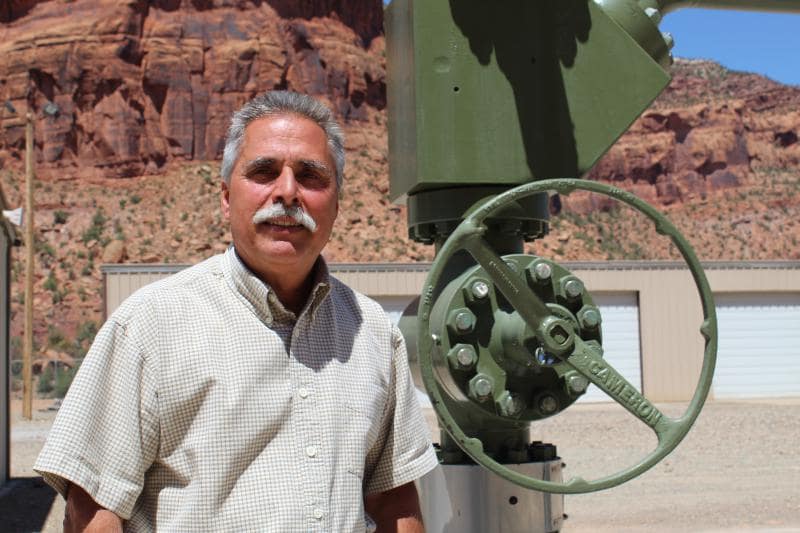
Nicholas, the project’s operations specialist, has felt quite a few earthquakes since he moved to the valley in the 1990s.
“The one in 2013, it woke me up and I was definitely startled,” Nicholas said.
It was particularly startling because Nicholas knew he had—and the dozens of others that have occurred at the site—happen.
“I’m pretty closely connected with the project so that probably had some sort of an effect on how it made me feel,” Nicholas said.
In a pickup truck, Nicholas drives along the latte-colored Dolores River. After the Paradox Valley, the river meets up with the San Miguel and wends its way through a remote stretch of western Colorado and eastern Utah’s canyon country before emptying into the Colorado River. It’s a water source for about 40 million people in the Southwest.
Since 1996, the facility’s sole goal has been to keep the Dolores from getting too salty, part of a watershed-wide effort to keep the entire Colorado River from picking up too much salt. In 1973 the U.S. signed an agreement with Mexico called the “Permanent and Definitive Solution to the International Problem of the Salinity of the Colorado River.” As part of that agreement, the U.S. said it would take steps to reduce the river’s salt load. That led to projects like Yuma, Arizona’s inland desalination plant, and the Paradox Valley project.
If the Colorado River runs too salty at the U.S.-Mexico border, the U.S. could be in violation of a longstanding treaty over the river’s quality, further raising the stakes to figure out what’s happening in Paradox.
Snowmelt from the nearby La Sal mountains filters through the Paradox Valley’s salty soils, draining toward the valley’s low point, the Dolores River. As it drains, the snowmelt transforms into brine, eight times saltier than sea water, and seeps into the Dolores, loading it with salt. In dry years the brine collects on the valley floor in black, sulphur-smelling pools.
Salt degrades water quality and makes it harder for people to use, Nicholas says. Using a network of shallow groundwater pumps, the project intercepts the naturally-occuring brine before it can seep into the river.
“It’s just a natural pollution,” Nicholas said. “It’s polluting the river and contaminating the river.”
“But if it’s naturally occurring is it pollution?” I asked.
“Well it doesn’t make it any better just because it’s natural. Right?” he said.
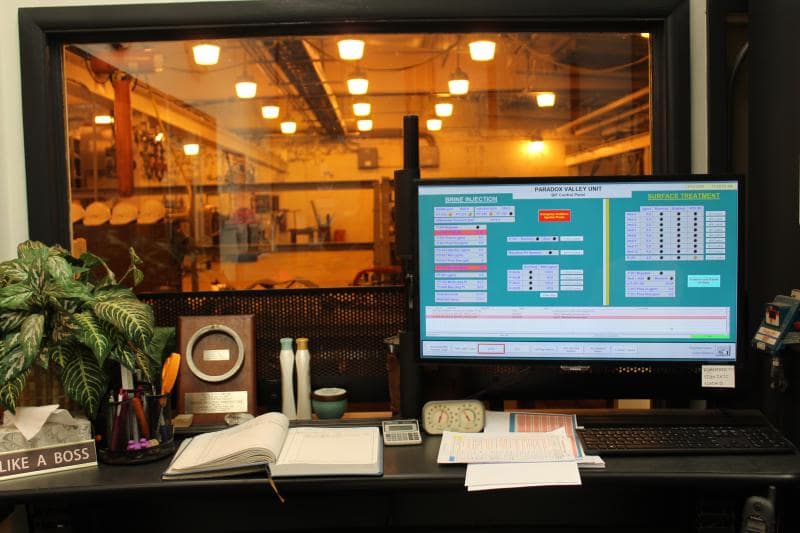
Salt enters the Colorado River system in many ways. Some springs that feed western rivers are naturally saturated with salt. Desert agriculture requires irrigation. As fresh river water moves over salty, desert soils it dissolves salt, and some portion of that irrigation water returns to the river channel. The Paradox Valley, with its thick subsurface salt layer, is unique in the basin, Nicholas said.
“Paradox is kind of unusual because it is about a two-mile stretch where you get 150,000 tons a year of salt potentially getting into the river system,” he said.
After the brine is intercepted, pipes carry it to a treatment facility and then on to a deep injection well. When that brine lubricates a faultline it can slip and cause an earthquake—like the magnitude 4.5 quake Nara Bopp felt in March.
“It probably got attention for maybe a day and then probably was something that people would kind of mention in passing over the course of the week,” Bopp said. “But then we kind of all forgot about it.”
Moab residents moved on quickly, but the earthquake has had a lasting effect on the project. It was the largest earthquake the project ever caused.
The project’s potential ability to cause earthquakes was well known before its current injection well was drilled. To prepare for the creation of the Paradox Valley Unit, in 1983 the Bureau of Reclamation put in place a network of seismic sensors to keep an eye on earthquake activity in the region.
In the project’s early years the earthquakes were relatively small and infrequent. In 1999 an earthquake from the facility breached 3.0 magnitude. Since then, 3.0 and higher magnitude quakes have taken place in 2000, 2002, 2004, 2013 and March 2019.
“The earthquake in March, it was a fairly considerable-sized fault plane that slipped and that’s what allowed the larger magnitude,” Nicholas said.
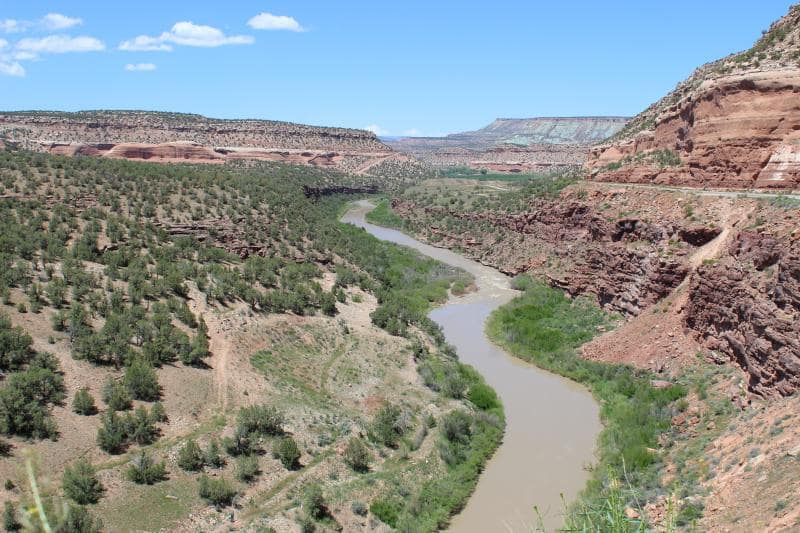
Since early March, the facility has been turned off. In the past four months about 27 other small earthquakes have registered in or near the Paradox Valley.
Now, with its injection well reaching the end of its life, the Bureau of Reclamation is forced to look at how it wants to handle the Dolores River’s saltiness decades before it thought it would need to revisit it.
“I think they hoped (the injection well) would last 50 years,” Nicholas said. “And as it turns out we’re about 25 now and so we know that we’re approaching the end of its useful life just based on its performance.”
Reclamation announced it was putting together a new Environmental Impact Statement (EIS) for options to dispose of the brine in 2012. The agency has yet to release a draft EIS, but has listed a set of possible paths.
One option is to try the same tactic, with a new injection well drilled somewhere near the Paradox Valley facility and into rock layers less likely to see seismic activity. Another option would remove hydrogen sulfide from the brine, and then pump the salty water into an open pit to evaporate. One more option would use technology to crystallize the brine and then dispose of the waste.
The final option in the EIS is that Reclamation might choose to retire the project altogether, let the Dolores return to its salty natural state, and find other places in the Colorado River basin to clean up the water in order to keep the U.S. from violating its treaty obligations to Mexico.
This story is part of a project covering the Colorado River, produced by KUNC and supported through a Walton Family Foundation grant. KUNC is solely responsible for its editorial content.
Luke Runyon is host and producer of “Thirst Gap,” from KUNC. He’s based in Grand Junction, Colorado.
IRA FLATOW: Now it’s time to check in on the state of science.
SPEAKER 2: This is KERA–
SPEAKER 3: For WWNO–
SPEAKER 4: St. Louis Public Radio.
SPEAKER 5: Iowa Public Radio News.
IRA FLATOW: Local science stories of national significance. The federal government is seeking public comments on four possible plans for treating the water of the over-salty Dolores River in Western Colorado. Why do you need a new plan? Well, the old treatment facility was reportedly causing earthquakes.
Joining me now is Luke Runyon, water reporter at KUNC radio in Greeley, Colorado. Welcome to Science Friday.
LUKE RUNYON: Hi, Ira.
IRA FLATOW: How can a wastewater plant cause earthquakes?
LUKE RUNYON: Well, it’s where they’re sending the water that’s causing the earthquakes. So this is an area in Western Colorado called the Paradox Valley. And the Delores River cuts perpendicular across the Paradox Valley and picks up all kinds of salty groundwater that’s naturally occurring.
And back in the ’90s, the federal government built this facility in the Paradox Valley that was meant to intercept this salty groundwater and then pump it deep underground to get rid of it. And once you start pumping lots of water deep underground depending on what’s going on under there, you might end up causing earthquakes. And that’s what’s been happening for the last 25 years or so.
IRA FLATOW: So it’s kind of like fracking but not fracking?
LUKE RUNYON: It’s not fracking. It’s getting rid of the salty groundwater that’s actually about eight times as salty as ocean water. And the reason why they built this facility in the first place is because the Dolores River is a major tributary to the Colorado River, which supplies drinking water and irrigation water for about 40 million people in the Southwest. And if the water is salty, it makes it a lot harder to use for agriculture. And it possibly increases costs for municipalities to treat the water. And so they built this facility to try to decrease the amount of salt that was ending up in the Colorado River.
IRA FLATOW: So if it’s more or less a natural condition to have the water just like that, why do we need to do anything about it?
LUKE RUNYON: When I was in the Paradox Valley reporting this story, I talked with the guy who runs this particular facility. And he called it a natural pollution. And that was a new concept for me. I’ve never heard someone–
IRA FLATOW: That sounds like an oxymoron, right?
LUKE RUNYON: Yeah, kind of. But he basically said, we’ve pinpointed these areas in the Colorado River basin where salt enters the river in high amounts. In the Paradox Valley, the Dolores River picks up about 10% of all the salt that ends up in the Colorado River. And so if you can build a facility to intercept that and get rid of it, then it makes it a lot easier for downstream users in California and Arizona, Nevada to use water from the Colorado River, because it’s not so salty. It didn’t end up there in the first place.
IRA FLATOW: So what are the options the government is considering about treating the water?
LUKE RUNYON: So one of the options is just to do nothing, basically let the project end, and cap the old well where they were disposing of this wastewater, and just stop worrying about how salty the Dolores River is. Another option is to drill a new well and hopefully end up in a different geologic formation where you wouldn’t be causing earthquakes. That would be the plan.
Another option is to build a set of evaporation ponds where you could dispose of this brine and let it evaporate and then sell the salt. But that has a downside of potentially injuring migratory birds that would land on these ponds.
There’s also an option to build what they’re calling a zero-liquid discharge technology facility which would treat the brine using these thermal crystallizer. And it would clean up the water. And it would maybe be a little expensive to do it in the process. So those are the four options.
IRA FLATOW: A little expensive.
[CHUCKLING]
ZLDF, I’m trying to get an acronym for that thing.
LUKE RUNYON: Yeah.
IRA FLATOW: So what is the timeline on this thing, on this project and solving it?
LUKE RUNYON: So the federal government is collecting comments until February 4. And they’re hoping to make a decision by this summer. And each of these options– I mean, if they’re going to do nothing, the timeline is, well, we’re just going to do nothing. But some of these others, like building evaporation ponds, building this new treatment facility, those would take a bit longer and would potentially take up the rest of 2020 trying to build those out, if that’s the option that gets chosen.
IRA FLATOW: And who were they asking? Is it the all the public, all our listeners, or just people in your neighborhood?
LUKE RUNYON: I think you have a few stakeholders. You have local residents who are obviously going to be impacted by whatever decision is chosen here. But the Colorado River watershed, because it supplies so many different water users throughout the Southwest with water, you have a lot of people interested in Arizona, California, even in the country of Mexico, which receives water from the Colorado River. All of those users downstream don’t want this salt ending up in the Colorado River, because it makes their jobs harder. So they’re going to be interested too.
IRA FLATOW: Luke Runyon, water reporter at KUNC Radio in Greeley. Thank you for being with us.
LUKE RUNYON: Thanks so much, Ira.
IRA FLATOW: Happy new year.
Copyright © 2020 Science Friday Initiative. All rights reserved. Science Friday transcripts are produced on a tight deadline by 3Play Media. Fidelity to the original aired/published audio or video file might vary, and text might be updated or amended in the future. For the authoritative record of Science Friday’s programming, please visit the original aired/published recording. For terms of use and more information, visit our policies pages at http://www.sciencefriday.com/about/policies/
As Science Friday’s director and senior producer, Charles Bergquist channels the chaos of a live production studio into something sounding like a radio program. Favorite topics include planetary sciences, chemistry, materials, and shiny things with blinking lights.
Ira Flatow is the founder and host of Science Friday. His green thumb has revived many an office plant at death’s door.